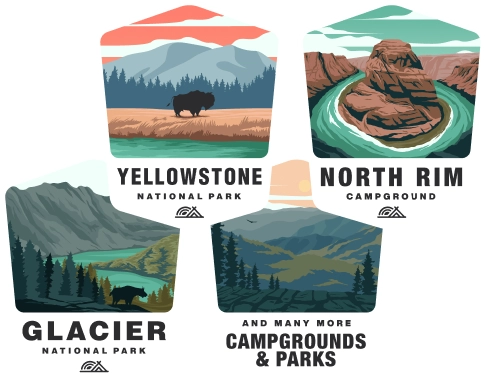Camping at Jones Valley Inlet Dispersed Area Campground
Introduction
Jones Valley Inlet Dispersed Area Campground is a camping area located within the Shasta-Trinity National Forest in Northern California. It offers a rustic camping experience for those looking to enjoy the great outdoors away from the crowds. Dispersed camping means there are few or no services and facilities, so it's important to plan ahead and be self-sufficient.
Location
The campground is situated near the Jones Valley Boat Ramp on the shores of Shasta Lake. This location provides campers with easy access to water-based activities like boating, fishing, and swimming.
Access
Access to the Jones Valley Inlet Dispersed Area Campground is generally via forest roads which might not be paved and could require a vehicle with good ground clearance, especially if conditions are wet or rough. It's important to check local conditions and any vehicle restrictions before attempting to access the campground.
Camping Rules and Ethics
- Leave No Trace: It's crucial to follow Leave No Trace principles. Pack out all trash and minimize your impact on the environment.
- Campsite Selection: Use existing campsites rather than creating new areas to reduce the impact on the land.
- Campfires: Check local fire regulations before starting any fires. You may need a California Campfire Permit, and during certain conditions, fires might not be allowed.
- Water Source Protection: Camp at least 100 feet away from any water sources to protect water quality.
- Wildlife: Keep all food stored securely to protect both animals and your supplies.
- Pets: If pets are allowed, they should be under control and should not disturb other campers or wildlife.
Facilities and Services
As a dispersed campsite, Jones Valley Inlet Dispersed Area Campground typically offers no amenities like running water, trash removal, or toilets. Campers must be self-sufficient and bring all necessary supplies, including water, shelter, bathroom solutions (like portable toilets or shovels for cat holes following ethical guidelines), and food storage.
Fees and Permits
There are often no fees for dispersed camping, but this can change, so it's wise to check with the local ranger district for the most up-to-date information. Permits, such as campfire permits, are sometimes required and can usually be obtained for free.
Weather and Best Time to Visit
The weather in the Shasta-Trinity National Forest can vary greatly with the seasons. Summers are typically warm and dry, ideal for camping, while winters can be cold with snow, limiting access. Spring and fall can provide pleasant conditions but may come with unpredictable weather. Check the forecast before planning your trip.
Reservations and Capacity
Dispersed campsites like those at Jones Valley Inlet are usually first-come, first-served, with no reservations possible. The capacity is limited by the space available and the need to reduce environmental impact. During peak times, arrive early to secure a spot.
Health and Safety
- Wildlife: Be aware of local wildlife and store food securely.
- Emergency Preparedness: Bring a first-aid kit and know how to use it. Have a plan for emergencies since you're likely to be far from medical facilities.
- Water: Purify water from natural sources before drinking.
- Communication: Cell service might be unreliable, so have alternate means to call for help if necessary.
Conclusion
Camping at the Jones Valley Inlet Dispersed Area Campground can be a rewarding way to experience the natural beauty of the Shasta-Trinity National Forest. However, the lack of services means it's essential to come prepared and to follow guidelines intended to preserve the environment for future campers. Always check with the local ranger station for the latest information before you set out.
